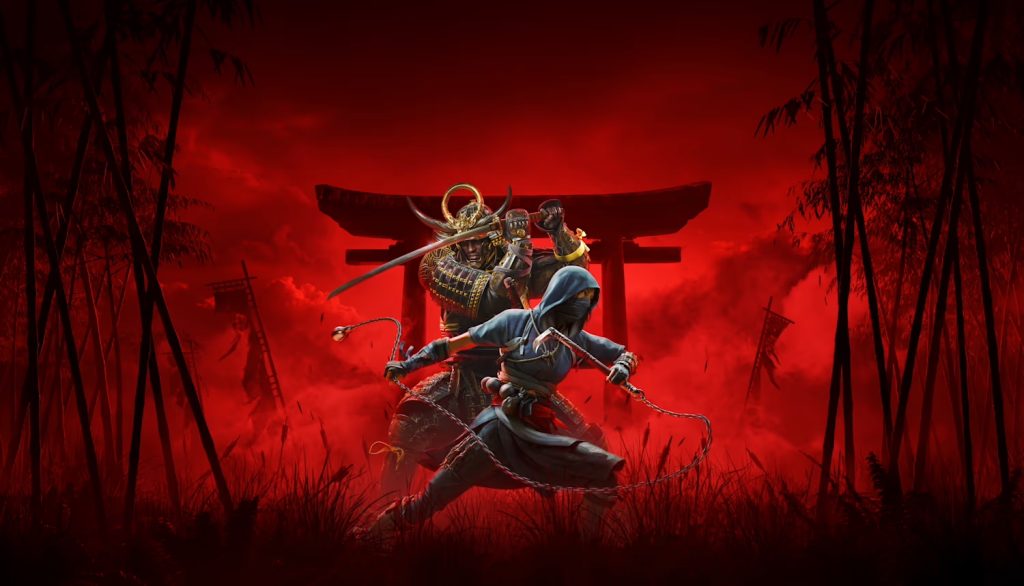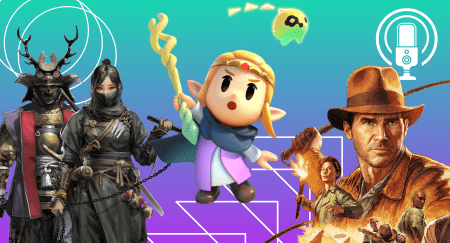I was one of the most hyped writers on this site for this year’s edition of Assassin’s Creed. However, my excitement waned when the game debuted at an 84 on Metacritic. That’s a perfectly respectable score — and one that I wondered might be unfairly low; many games seem to be scored too low this year — but it meant I could wait until a sale.
Cut to a half-off discount and a too-hot summer, and I finally booted up Assassin’s Creed Shadows. I was quickly enamored with the dual protagonists: Naoe, a stealthy ninja, and Yasuke, an end-of-an-era samurai. However, they are held back by the game’s overall systems. While Shadows isn’t bad, it’s easy to see why it’s not great. I’ve been enjoying it for the most part, but that’s in spite of what just feel like some truly baffling design choices. Please enjoy my rants.
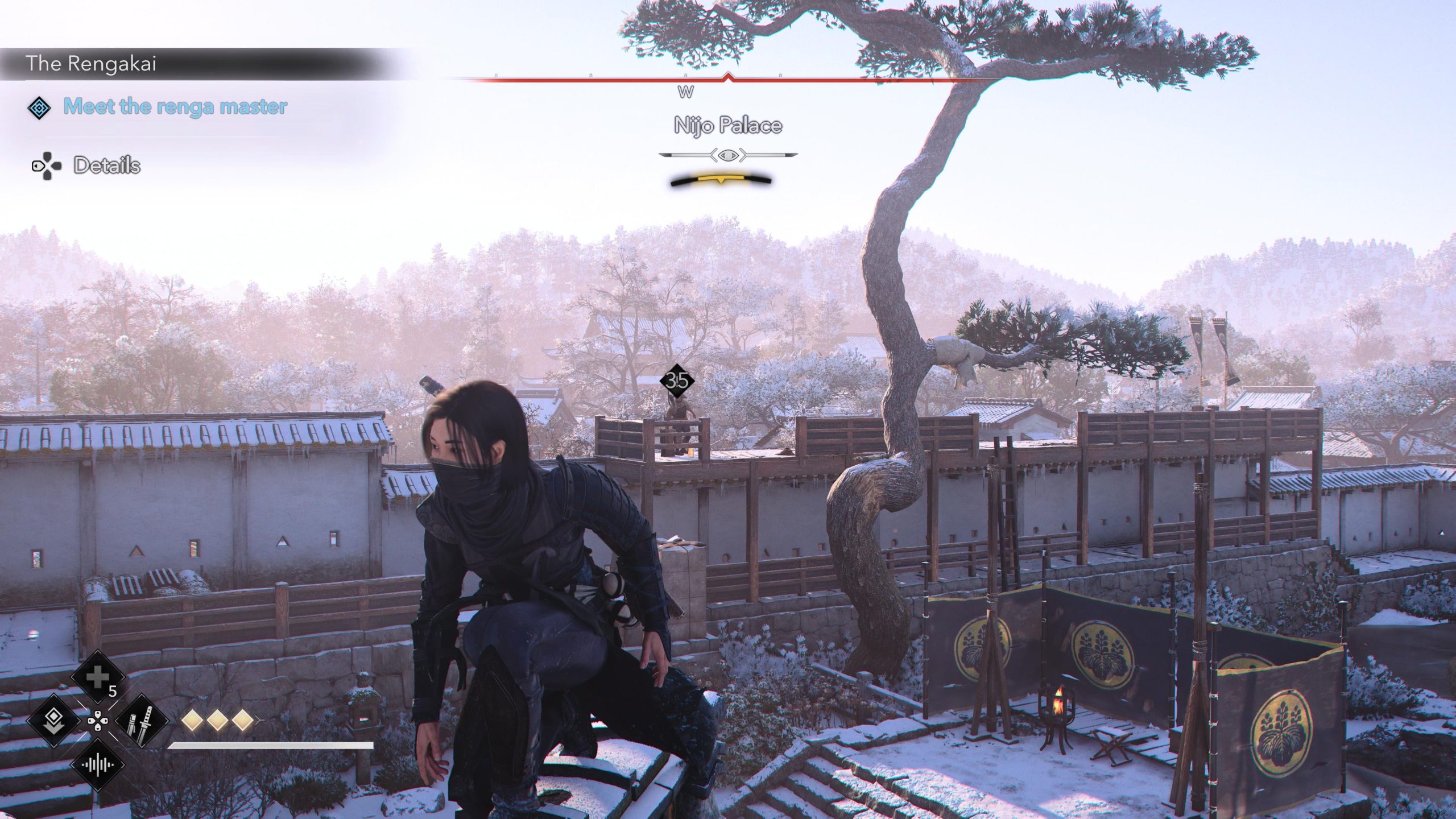

1. You Can’t Change the Time of Day
The number one most absurd design choice in Assassin’s Creed Shadows is the removal of a modern mainstay feature that lets your protagonist nap or meditate until a different time of day. Instead, the time changes (slowly) over the course of an hour of gameplay. This wouldn’t be such a big deal, but the game’s combat, especially for Naoe, is heavily predicated on stealth and shadows. I mean, it’s in the title, for crying out loud!
It is aggressively easy to be seen by enemies in this game. In recent Assassin’s Creed games, the bad guys often didn’t look up — but these NPCs do. You’ll be scaling a roof, thinking you’re a slick spy, when a maid across the yard notices you and screams. But when you’re in shadows, especially at night, you’re practically invisible, and it’s awesome.
Unfortunately, you can only do this kind of combat about once a real-life hour. I don’t want to leave my PlayStation 5 on for 25 minutes while I wait for the perfect time of day to take on a castle.
On the flip side, there are some fights and platforming challenges where clear daylight helps quite a bit. Not being able to adjust the time of day — when, meanwhile, the seasons seem to change frequently — is really, really annoying. I’m constantly trying to micro-manage a giant open-world game, fast traveling as soon as the sun starts to set to try and time a certain quest just right. It’s not fun.
Naoe is meant to represent the cusp of ninja-hood — I seriously doubt she’d ever try to break into a palace in the middle of the day. The good news is that, literally as I was writing this listicle, Ubisoft announced a roadmap with a free update in September for fast-forwarding the time of day. That’s great and all, but I doubt I’ll still be playing Shadows by then. I can’t believe the game launched without this feature, especially when Ubisoft has included it in the last several games.
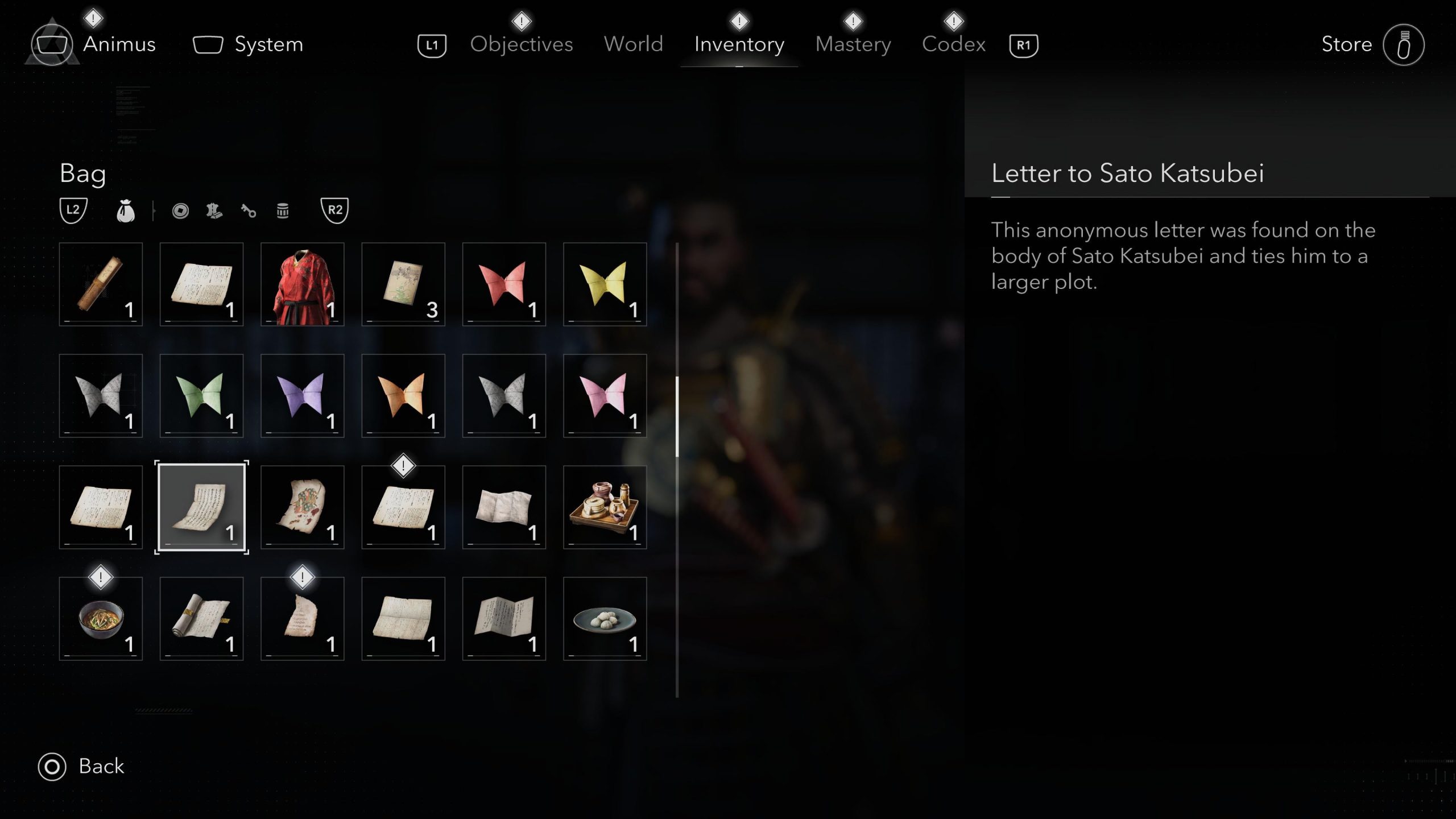
2. Disappointing Quest Inventory
You can gather interesting letters and messages on your journey, but, inexplicably, you can only view their contents during a brief on-screen pop-up in the moments right after you first collect them. If you accidentally press the close button (which is easy to do, as it’s the same button as “dodge” or “jump down”), you’ll lose it forever.
The section of the inventory dedicated to quest items isn’t intuitive to find, so much so that I initially didn’t think I was saving things at all. Once you do get there, you can’t view the significance of what you’ve gathered. All the contents of that spicy letter between warring daiymos cannot be reread (aside from a brief summary). If there were hints in the letter, I’ll have to just remember them. It feels like a strange brush-off to the writers who spent time making that content in the first place.
I do appreciate that there’s no inventory limit to my gear (or very breakable porcelain tea sets, miso soup that definitely hasn’t gone bad, giant paintings, or origami ransom notes). But I just wish I could easily read these damn letters.

3. Beautiful But Empty
The set design of Assassin’s Creed Shadows is absolutely gorgeous, and there are changing seasons that showcase these landscapes in all their beauty. But there just isn’t a whole lot going on from place to place. There’s an attempt to sprinkle in random events with NPCs to whom you can give advice or try to help, which I do appreciate… but these moments are few and far between, and the interactions are very short. It doesn’t help that the map is massive, with very few visible destinations among the fog of war, making it difficult to identify where you need to go for a far-flung quest.
After about 20 hours, I started liberally using the game’s Pathfinder option with “Auto-Follow Road” enabled. I let my horse ride around the map, discovering fast travel locations while I answered emails on my computer (or was writing this article). I remember doing something similar in Red Dead Redemption 2, but that game had the option for “cinema mode,” with changing camera perspectives and music. Additionally, RDR2 featured a variety of fascinating, surprise random interactions, so you really did want to stay attentive by the controller.

By comparison, in Assassin’s Creed Shadows, everything is aggressively telegraphed, for better or worse. A wandering ronin sees you and recognizes you from your wanted poster? You’re aware that he’s a danger before he even sees you. Wondering if you can save that civilian from a bullying soldier? The assassinate button is already there. Is this an interesting shrine? Yes, and here are exactly the locations of the four “lost pages” you need to gather to earn a skill point. There are very few interesting conversations to overhear; even when I found the most interesting one of all (a mother and daughter shivering alone, without hope in war-torn Japan), I couldn’t interact with them at all.
What’s most absurd about all of this is that it’s the same formula that Ubisoft has been using for over a decade, despite gamers complaining and growing weary of the model. People were vitriolic about the expanse and length of Assassin’s Creed Valhalla (2021). Why has Ubisoft learned nothing? There are too many regions and sub-regions, sprawling out in the endless pursuit of quantity over quality. Which brings me to…
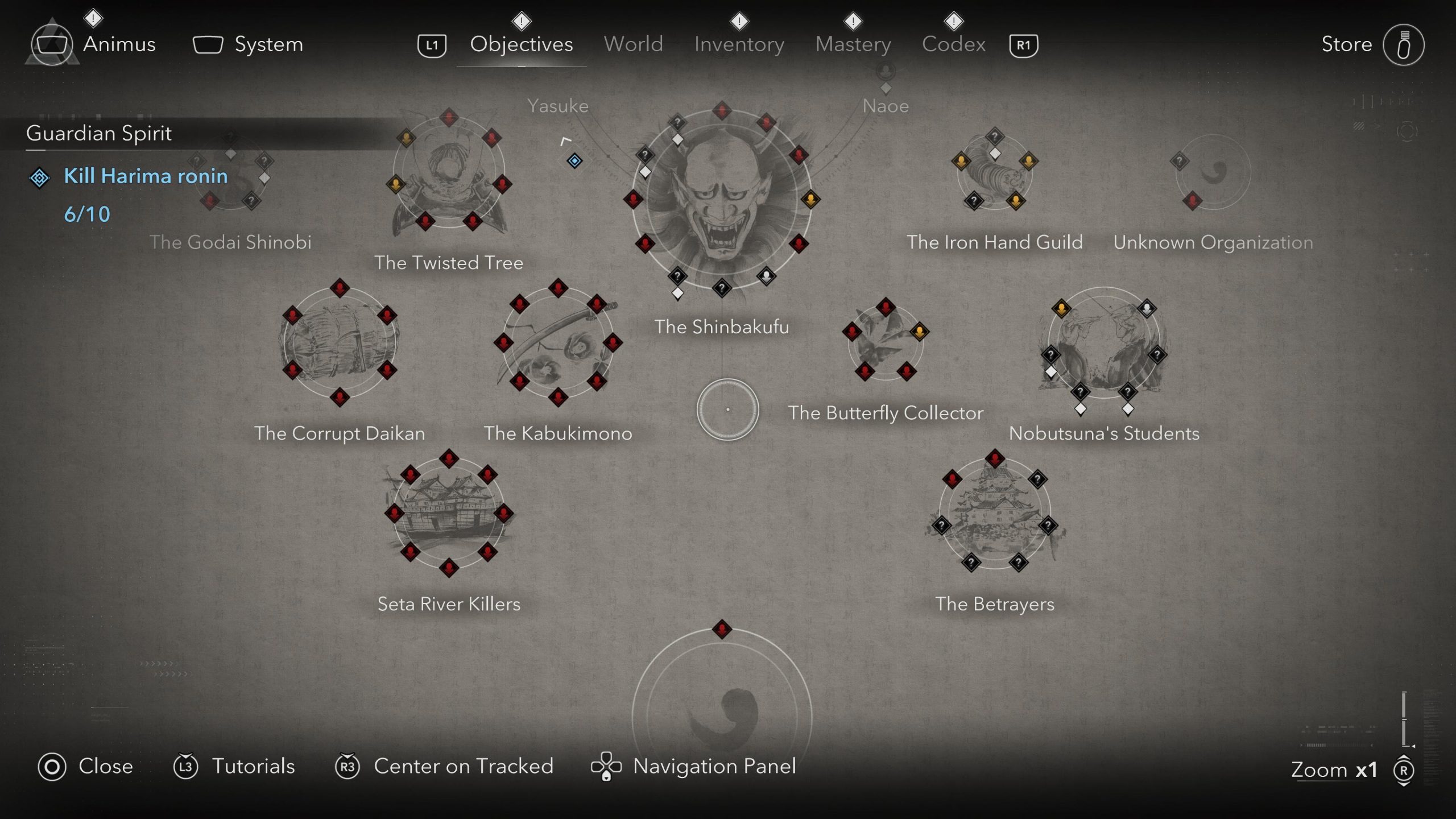
4. There’s a Stupid Number of Targets
I have come to dread the thump-thumping sound in my quest menu that indicates I’ve discovered yet another conspiracy ring of bad guys that need killing. Assassin’s Creed Odyssey (2018) operated under a similar structure, because you had to destroy a sub-group before getting to the boss. I remember it mostly working then.
However, that is not the case with most Bad Guy Rings you uncover in Shadows, as most are spin-off optional side quests with lackluster rewards. And, again, it’s not cute seeing the exact same formula repeated eight years later, but worse.
I understand that the game is trying to contextualize that times were tough in Japan in the 1500s. There are opportunists and criminals all over, but it is just not fun to get yet another ring of quests where the gameplay to take them down will be essentially the same as what I’ve done dozens of times already. As of writing, I’ve uncovered 16 groups that have five to eight bad guys each, and it’s clear there’s going to be more based on available spaces in the game’s Objectives menu.
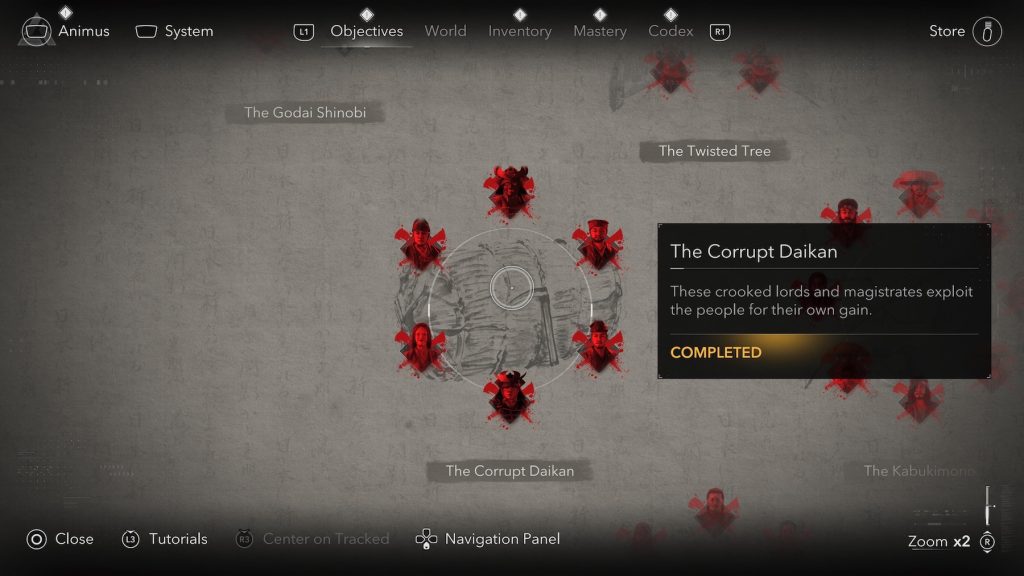
Some of the quests have stronger emotional hooks than others — a group, for example, who are kidnapping children to ransom their parents — or have interesting prizes, such as a cool katana or an unexpected summoning ally. But when it comes down to gameplay, they are all the same. It’s a deeply repetitive game. There’s just too many damn people to murder!
On a related note, there is no easy way to gauge significance between the game’s varying side quests. While the main quests are clearly denoted, all of the side quests pop up in a myriad of rings in a quest map marked by the quest giver’s face rather than a standard dropdown list. (It’s an aesthetically pleasing quest board.) In a positive light, I can look at this choice and think, “Ah, my decisions affect ‘real’ people.” But in a more realistic light, it’s super annoying that I can’t tell which quests will bring meaningful cutscenes, introduce new partners, or just offer grinding fetch quests.
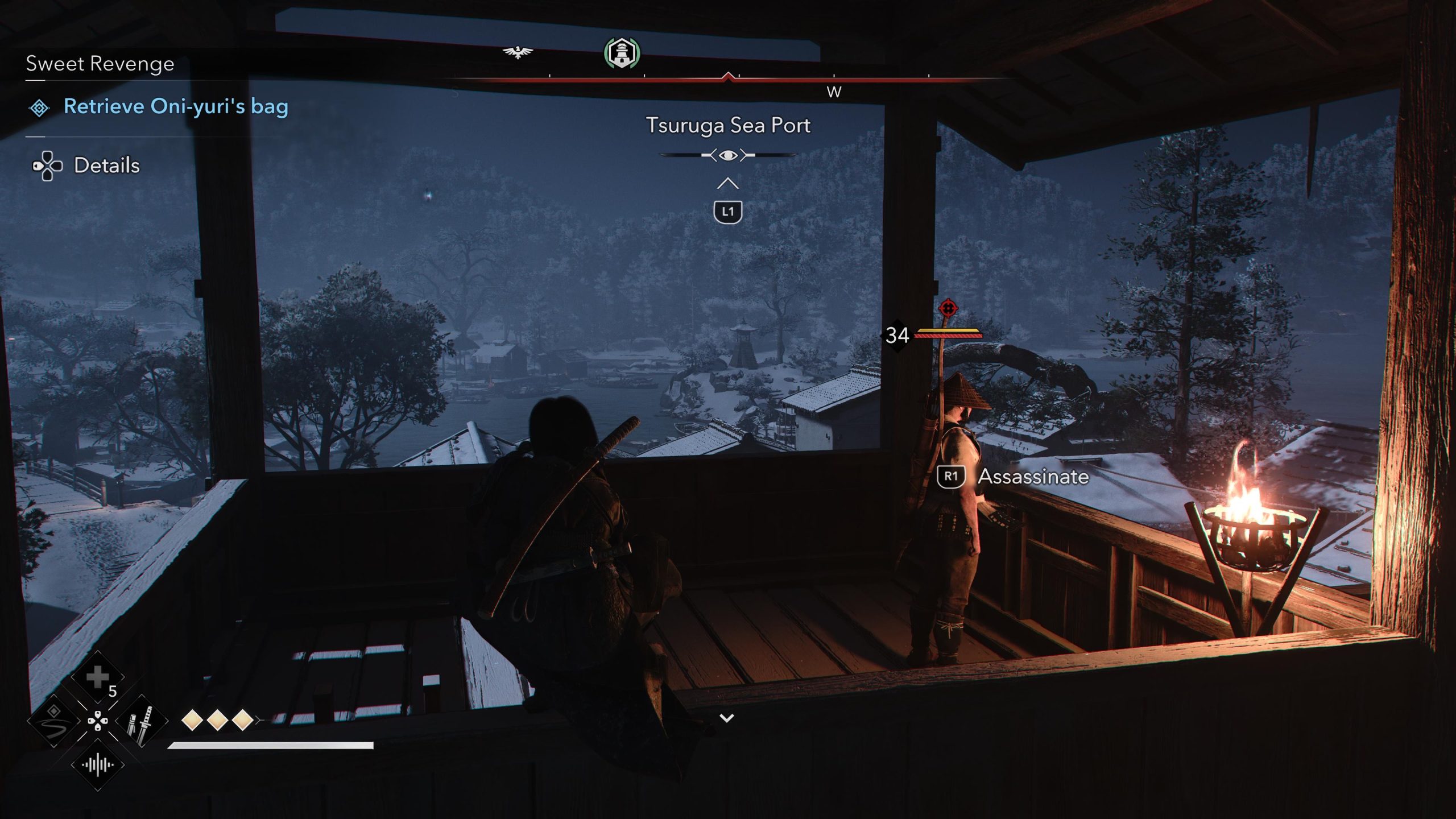
5. No Knock-Out Option, Even Though Naoe Feels Bad About Killing People
Shadows also lacks a readily or consistently available knock-out or “sleep poison” option, which feels like an odd choice given the emphasis put on Naoe’s feelings about death.
A huge part of Naoe’s personal journey revolves around grief and guilt over the first man she killed (she then went on to kill another one about 10 minutes later). She is also on a major quest of vengeance for her father and her village, angered by those who brutally destroy Japanese townsfolk. Naoe is fueled by a deep resentment toward others’ senseless murdering, but seems to be fine killing people all the time. These can include samurai protecting a castle with gold (you are required to kill at least two samurai per location before you can unlock the treasure) and harmless servants. It’s a total cognitive disconnect for Naoe not to have a non-lethal takedown option.
I hate that I even have the option to kill servants, who will run and scream and tell their bosses I’m there, and I hate that I’m making Naoe do things that are antithetical to her stated values. Furthermore, there’s really no benefit to killing or not killing; if anything, killing is better for experience points. Naoe never comments on it. It just doesn’t feel right at all.
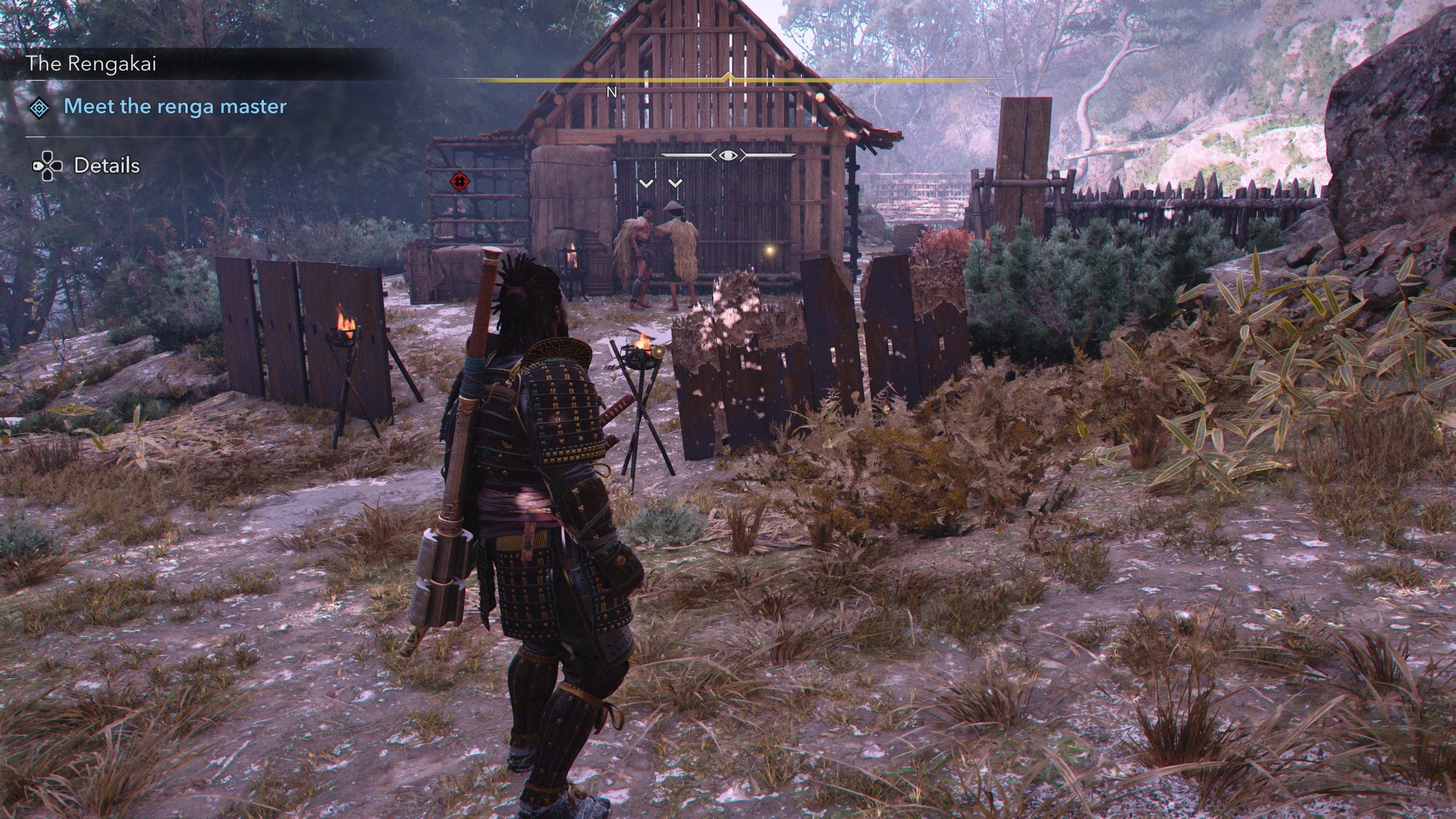
6. Bandit Camps Are Never Fully Cleared
The game teems with enemy areas marked with a little red diamond. Sometimes they’re bandit camps, other times they’re enemy military encampments, shady merchants, or mean rich-people mansions. You can kill everyone there and take all of the treasure, but they are never fully cleared. In the next season, new bad guys come in and replace the dead ones.
For the military forts or mansions, I suppose this makes sense. But for the bandit camps, it’s a missed opportunity. You could make the argument here about how power and corruption always exist, that another villain will always take another’s place, but that’s bringing insight into a game that isn’t there.
I get that bandit camps exist in-game for design reasons — leveling up, practicing skills, gaining resources. But there are already other ways to do all that in Shadows. Each season, players get newly generated contracts with random targets and pop-up bandit camps to loot, which give far better rewards. There’s really no reason for the bandit camps to be so lackluster, especially when another open-world game showed a better way forward and did it years ago.
Frequently lauded as one of the best games of all time, The Witcher 3: Wild Hunt (2015) would replace cleared bandit camps with fast travel points and townspeople who would sell you gear. In 2017, the highly popular Horizon Zero Dawn did the same thing, and even added a temporary, compelling companion who gave an awesome gear reward at the end of clearing out all the camps. Horizon has frequently drawn comparisons to Ubisoft’s open-world titles, and I find it odd that the French game maker doesn’t seem to have looked at its bestselling competitors for inspiration.
In Shadows, there are villagers in each region who ask for help reducing the number of bandits (i.e., kill 25, then 50, then 100). As a thank you, you’ll receive a short cutscene and some gear. But again, these camps just keep getting refilled. It feels like you make no real difference in making the areas safer. It feels highly transactional, partially because, as the bandits get replenished, so do their resources. The bandit camps, as a result, just become a murdering grind. I started keeping track of the best places to easily farm resources. It just felt icky to routinely run around and kill these guys simply because they had the bad luck of being posted at the easiest-to-destroy mountain camp or city lumber yard.

7. Naoe and Yasuke Are Great Protagonists, But Never Get To Battle Together
A short prologue introduces you separately to both Naoe and Yasuke. Then, you’re with Naoe for several hours until you get to a main story point when you get access to Yasuke. After that, the game easily lets you switch between them, though sometimes requiring one or the other. The game lets you call in temporary allies to battle (just like in other recent Assassin’s Creed titles), but strangely, never the other protagonist.*
They show up in cutscenes as if they travel together, but we never actually see them do that in-game together. It’s a shame, since they have great banter, they’re excellent warriors, and they have awesome chemistry (though no romance between them, which also feels like a missed opportunity).
Still, you can never call your best pal to help you, which is a huge disappointment. There have often been fights as Naoe where I wish Yasuke could bail me out when I’ve gotten overwhelmed with too many enemies, or conversely, times when a secretive assassination would’ve cleared the way for the hard-to-miss samurai.
Furthermore, some of the game’s best content is Yasuke’s back story… which you don’t get to until at least 10 hours into the game. I understand that it’s hard to balance two main stories, and that they likely wanted to hook players into the “present” action, but I do find it takes a long time to get there.
*At least, not in the game I’ve seen so far. I have a playtime of 50 hours, and I think I’m a good part of the way through the main story.
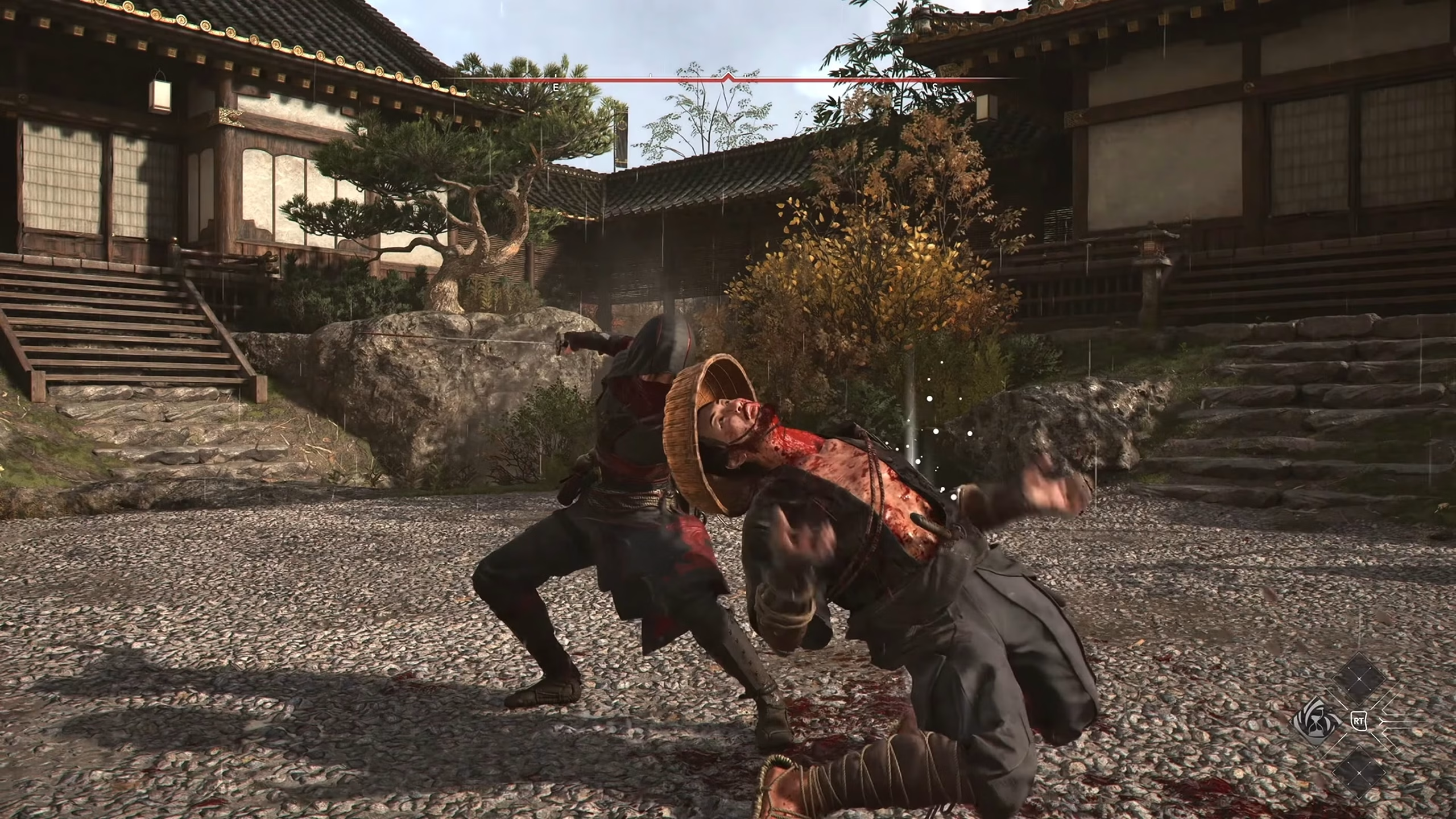
8. Bad Stealth Design
For the most part, the game succeeds in having two characters who “feel” very different to play — stealth with Naoe, aggressive with Yasuke. In theory, it positions the idea that the game is for both of them. But it’s really not.
Combat flares up constantly, even when you’re being as sneaky as possible. Want to assassinate that one guard? Well, he’s too strong to get rid of with one cut, so you’ll have to do an open fight that attracts all his buddies. Even in the game’s combat settings, description text admits that Naoe does better in stealth and will struggle to handle large groups. I quickly turned on a setting that always let me “successfully” assassinate in one go. But even with that, it’s not enough because the game doesn’t empower you to actually be stealthy. (See point #1.)
First, the controls are very imprecise. I frequently nudged Naoe in just slightly the wrong direction, in which case she flipped onto a roof in plan view of a guard. Or that time a giant bush appeared to be dense enough to hide in, yet everyone saw me anyway and someone shot me. Or when I tried to assassinate a guard but then his buddy somehow saw me even though I was hiding behind some crates and shot me. Or when I tried to climb out of a window just before a guard turned a corner but instead Naoe tried to climb onto the ceiling and the guard saw me and shot me. Recognize a pattern here?
Secondly, the maps just don’t allow for stealth. In the excellent Dishonored series, stealth is possible because the map gives a variety of ways to explore a location or follow a target. You can sneak in through the vents only if there are vents to sneak through. In Shadows, you can get vertical pretty quickly as Naoe (which is fun), but once you get on top of a building, there are precious few attic doors or open windows to climb through. I almost always had to resort to just dropping down into plain light, killing someone, and sprinting away as fast as possible.
The game is exceptionally easier to play as Yasuke. He’s stronger and dominates combat. While you don’t get the fun of sneaking around with him, he does actually succeed. I died far more frequently as Naoe because I couldn’t play as stealthily as I wanted to.
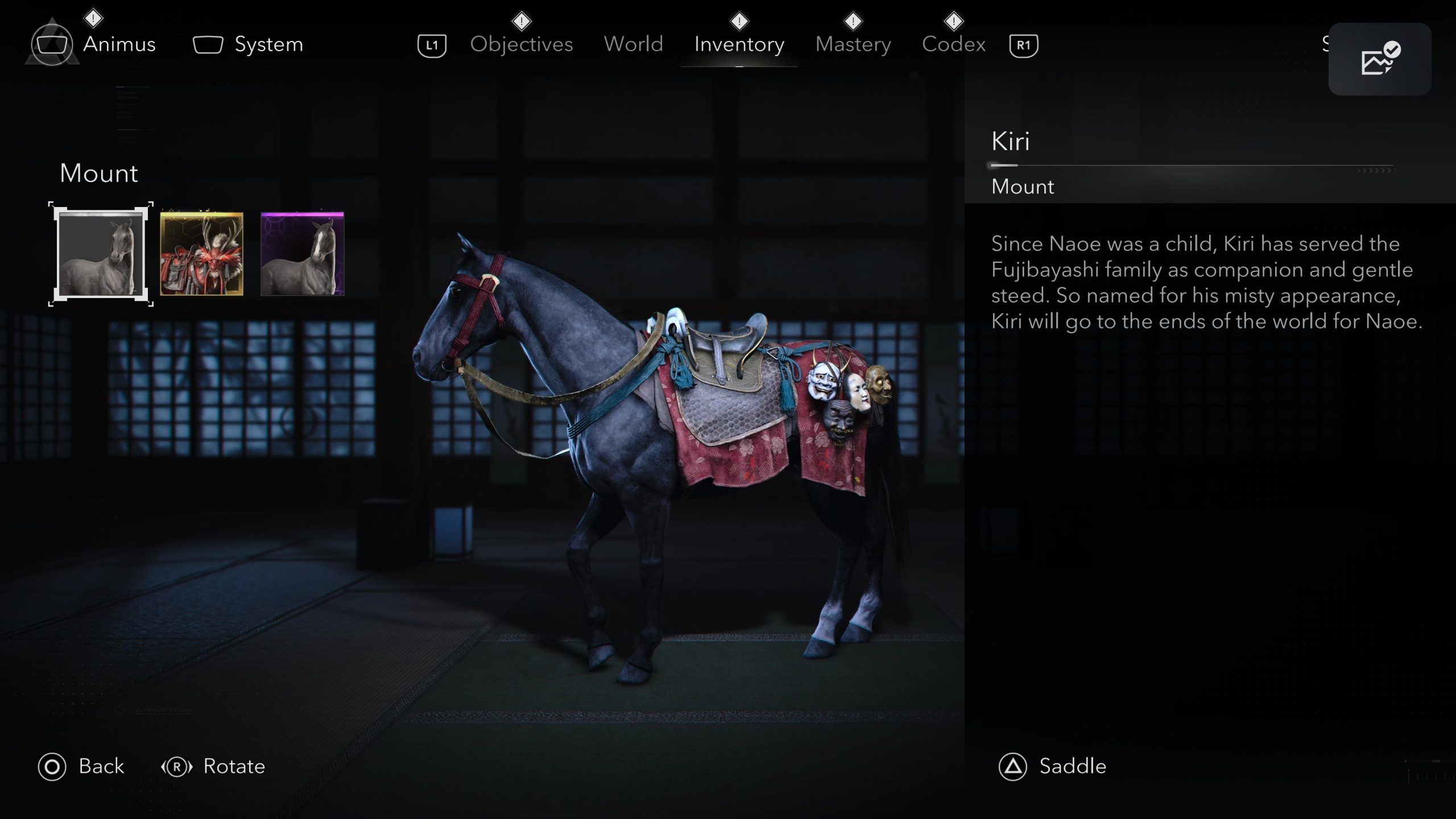
9. Horses With a Backstory? Cool, Get Rid of ‘Em!
Both Naoe and Yasuke have horses that are meaningful to their characters, and yet, Assassin’s Creed Shadows regularly highlights that you could buy other cool horses instead.
The beginning mount for Naoe is Kiri (as seen in the above image) who comes with this flavor text: Since Naoe was a child, Kiri has served the Fujibayashi family as companion and gentle steed. So named for his misty appearance, Kiri will go to the ends of the world for Naoe. Wow! What passion! What loyalty! This horse must have huge meaning for Naoe given that her town and family are destroyed in the opening hours of the game. This is a little piece of her childhood that Naoe can bring with her.
Yasuke, meanwhile, receives his horse, Kikai, as a gift from the lord who frees him from slavery and empowers him to be a samurai. There’s a touching moment in a cutscene when Yasuke is given the horse; it’s clear he’s realizing how far he’s come by having his own steed. The flavor text for that mount: Kikai was given a new chance. Its rider can grasp its undaunted spirit through the reins. There’s a powerful implication that Kikai was rescued in some kind of way and given a new life path, too. (Also, “its”? Gender this horse, y’all, don’t be lazy.)
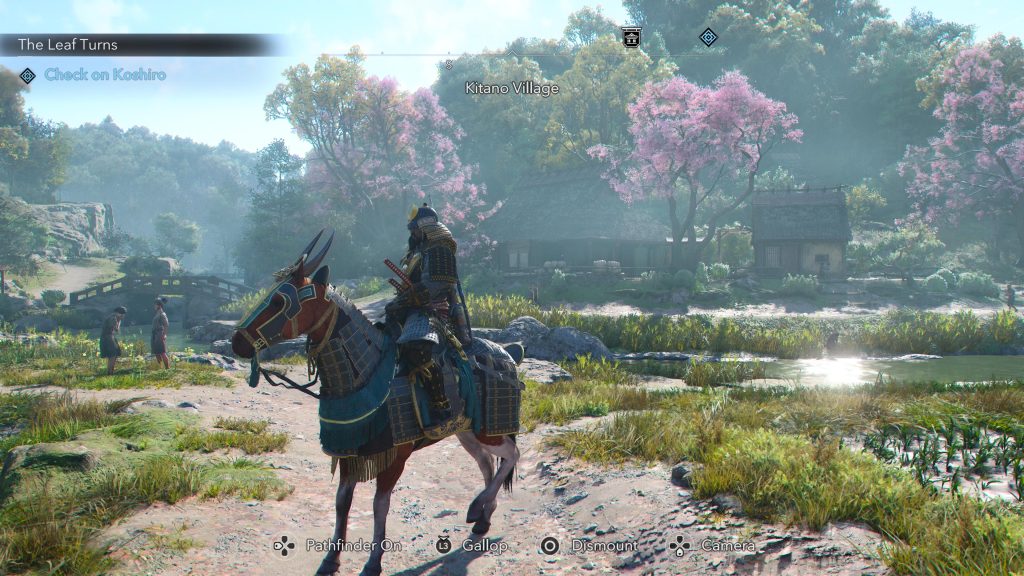
Okay, those are two great horses that could rival The Witcher 3′s ever-loyal Roach. There’s an opportunity here to really commit to these horses, especially since your hideout comes with a stable for your steeds. But not only does nothing ever come of these good horses, but the game frequently reminds you that hey, you could buy OTHER horses instead.
All cosmetic merchants sell a variety of horses with short flavor text descriptions that have no bearing. The horses have no stat differences (unlike in Red Dead Redemption 2), so it’s purely appearances. Some horses are highlighted in green, blue, or purple item boxes, indicating that they qualify for rarity just like your gear. It makes Kiri’s and Kikai’s black outlines seem underwhelming, like you “should” be trying to upgrade them. I just don’t get it though… Why? Why waste in-game design efforts on different mounts when you already made two horses that have distinct characteristics and backstories?
You can also get unique epic (gold) mounts through the Ubisoft store or special editions, so I suppose there’s the argument that they’re trying to make real money off of it, too. But all of those mounts are “unrealistic,” such as the giant dragon lion that came with the on-sale limited edition I purchased. It’s cool, but looks totally ridiculous romping through the fields.

The other micro-transaction horses are similarly otherworldly and break all the effort at immersion that the Assassin’s Creed Shadows developers have so painstakingly attempted with setting and historical accuracy.
Lastly, neither character is given any chance to take care of their horses (let me give ’em an apple, come on). The horses are absolutely necessary for getting around this giant map. You can pet every cat or dog you see (which is great), but no horse petting? It is yet another moment in the underappreciation of horses in video games, and frankly, I’m sick of it.
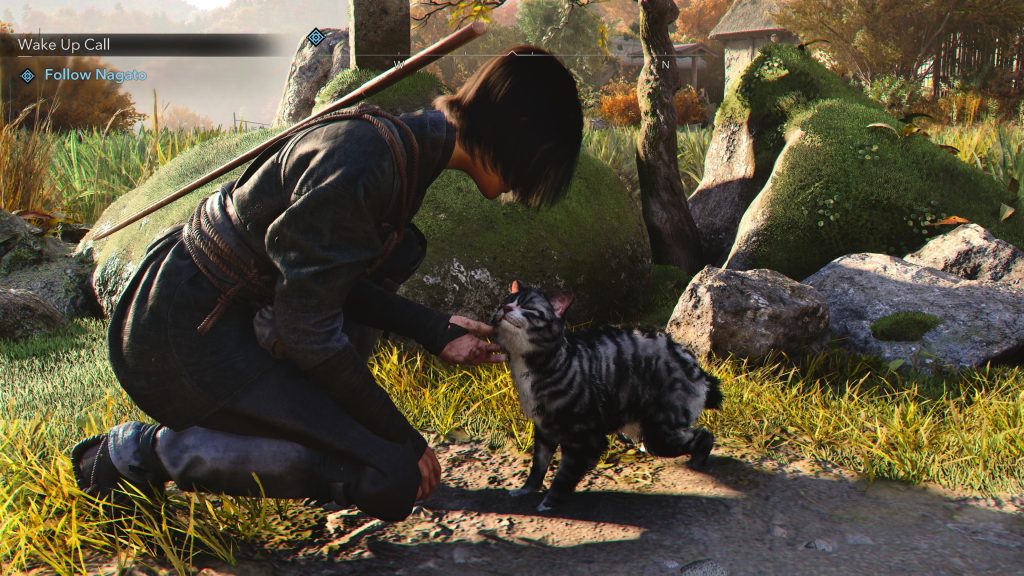
Assassin’s Creed Shadows Isn’t Perfect… But It’s Still Fun
All that said, I am still enjoying Shadows from what I’m calling a “slug mode” perspective. It’s easy to jump in and dip out. There’s plenty to do in a 15-minute game session or a multi-hour binge. I never have to think that hard while playing, and there’s always more to do.
Assassin’s Creed Shadows is very much a quantity over quality situation. Which is a shame, because there are some things that the game actually does really well! If you want to see what I mean, I’ve written a companion piece of seven things that Assassin’s Creed Shadows gets right, in case you’re curious.
In writing these dueling pieces, I think what’s the most confusing to me is why Ubisoft made so many baffling choices. They seem to have missed a few key lessons from their competitors, much less their own titles in the very same franchise. I just don’t understand why they would do so much of what they did.
Before playing, I wondered if 84 was too low of a score for Assassin’s Creed Shadows. Suffice it to say, I don’t wonder that anymore.
Assassin’s Creed Shadows, developed and published by Ubisoft, was released on March 20, 2025. It is available on PC, macOS, PlayStation 5, Xbox Series X/S, and iPadOS. MRSP: $69.99.
Amanda Tien (she/her or they) loves video games where she can pet dogs, punch bad guys, make friends, and have a good cry. She started writing for the site in 2020, and became an editor in 2022. She enjoys writing about mystery games, indies, and strong femme protagonists.
Her work has also been published in Unwinnable Monthly (click here to read her cover feature on Nancy Drew games), Salt Hill Journal, Poets.org, Litro Magazine, Public Books, and more. She was the Co-Founder and Editor-in-Chief of Columbia University's Culinarian Magazine, and served for two years as the Managing Editor of Aster(ix) Literary Journal.
She recently graduated with a MFA (Master of Fine Arts) in Creative Writing from the University of Pittsburgh. Her writing, art, graphic design, and marketing work can be viewed at www.amandatien.com.
She does not post a lot on social, but you can find her on X and on Instagram.


